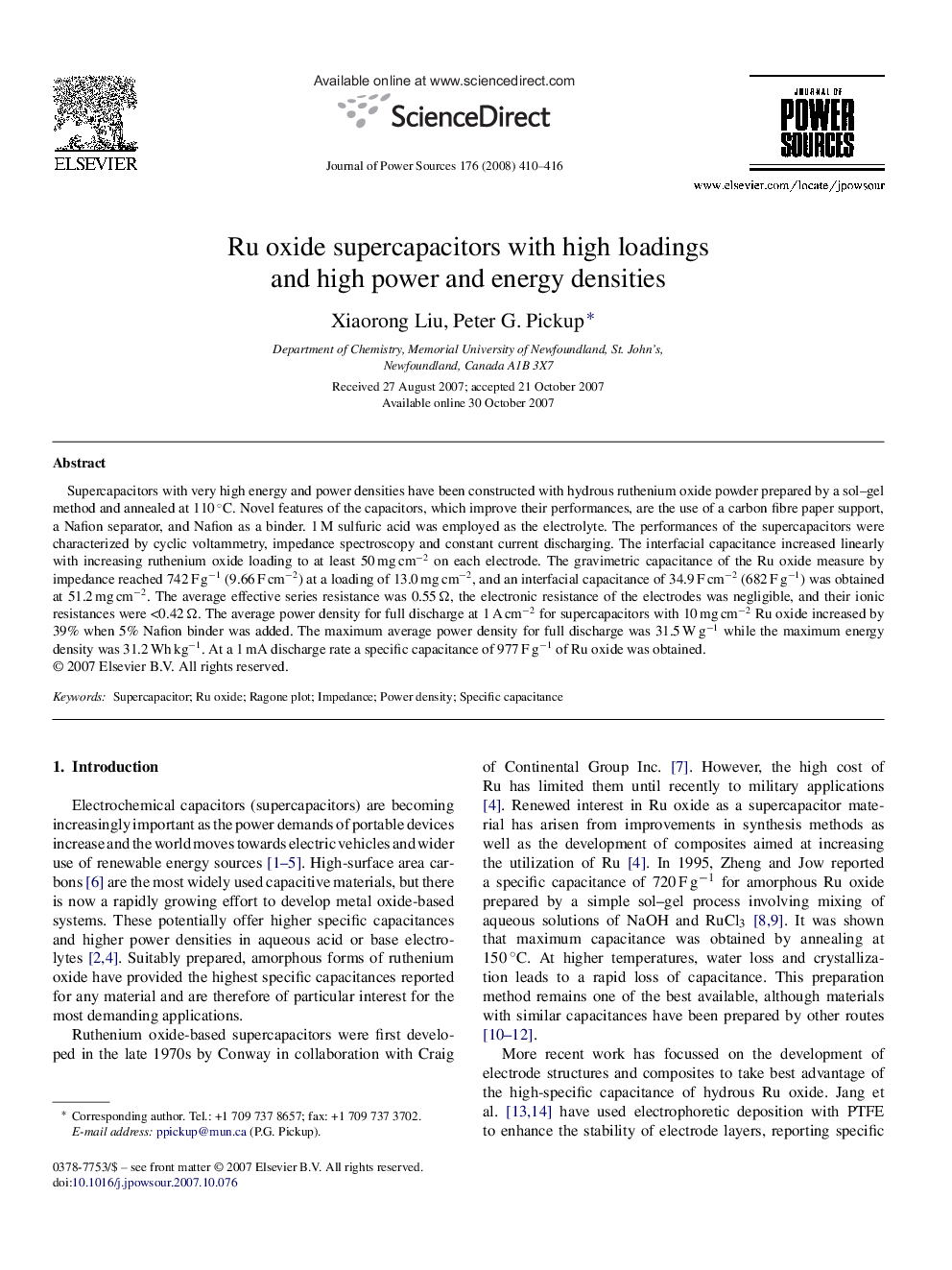| Article ID | Journal | Published Year | Pages | File Type |
|---|---|---|---|---|
| 1285916 | Journal of Power Sources | 2008 | 7 Pages |
Supercapacitors with very high energy and power densities have been constructed with hydrous ruthenium oxide powder prepared by a sol–gel method and annealed at 110 °C. Novel features of the capacitors, which improve their performances, are the use of a carbon fibre paper support, a Nafion separator, and Nafion as a binder. 1 M sulfuric acid was employed as the electrolyte. The performances of the supercapacitors were characterized by cyclic voltammetry, impedance spectroscopy and constant current discharging. The interfacial capacitance increased linearly with increasing ruthenium oxide loading to at least 50 mg cm−2 on each electrode. The gravimetric capacitance of the Ru oxide measure by impedance reached 742 F g−1 (9.66 F cm−2) at a loading of 13.0 mg cm−2, and an interfacial capacitance of 34.9 F cm−2 (682 F g−1) was obtained at 51.2 mg cm−2. The average effective series resistance was 0.55 Ω, the electronic resistance of the electrodes was negligible, and their ionic resistances were <0.42 Ω. The average power density for full discharge at 1 A cm−2 for supercapacitors with 10 mg cm−2 Ru oxide increased by 39% when 5% Nafion binder was added. The maximum average power density for full discharge was 31.5 W g−1 while the maximum energy density was 31.2 Wh kg−1. At a 1 mA discharge rate a specific capacitance of 977 F g−1 of Ru oxide was obtained.
